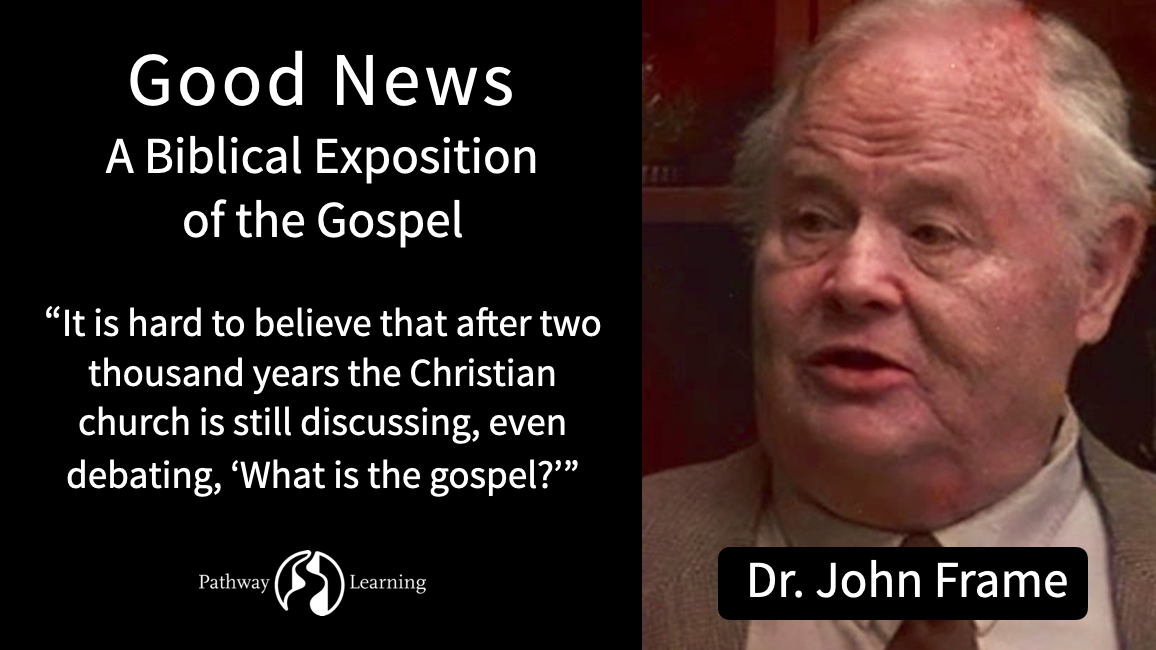Introduction to the Gospel of God
Series: The Gospel of God: Good News You Can Use
Author: Dr. John M. Frame
Title: Introduction to the Gospel of God
It is hard to believe that after two thousand years the Christian church is still discussing, even debating, “What is the gospel?” The gospel, the “good news,” is the fundamental truth of our faith, what we believe and proclaim to the world. If we don’t know what the gospel is, and if it doesn’t motivate everything we think and do and say, then what’s the point in claiming to be Christian at all?
At one level, of course, it is very simple: God saves sinners. But further questions and study draw us into a world of vast complexity and mystery. From that world, it is difficult to return to ordinary life, the world in which we are trying to communicate the gospel to needy people.
This is the sort of problem for which God raised up Pathway Learning. What we are all about is helping evangelists and church planters to bring the biblical message, even the most mysterious parts of it, to those hearing it for the first time. We are trying, as Cornelius Van Til used to say, to “put the cookies on the lower shelf.” But what we place on the shelf have to be real cookies, with all the sweet ingredients. To drop the metaphor: Not dumbed-down formulae, but the real biblical teaching, in all its richness.
The job is perilous. Theological accounts of “gospel” abound in oversimplification and overcomplication. How can we formulate the essence of it without getting lost in the details? How do we avoid the temptations of either parading our own academic subtlety or boasting of our down-home earthiness?
Prayerfully, we have concluded that the doctrine of the Trinity helps us to meet such challenges. In Scripture, God is three in one. So salvation from sin is the work of the three divine persons: the Father’s eternal plan, the Son’s actions in history, and the Spirit’s work in our hearts. So it is threefold, but it is also one. Each divine person is present in the others and in the great drama of redemption. So in the end it is a simple gospel, but one that is open to the riches and mystery of the eternal God.
In the history of debate over “gospel,” especially in recent years, some have emphasized its application to individual persons, what God does for me (1 Tim. 1:15). Others have emphasized that the gospel renovates the entire cosmos (Rom. 8:18-25). Still others call attention to what redemption does for God himself: that it vindicates his sovereignty and glory (John 17:1-4).
We see these three emphases, not as rival understandings of the good news, but as aspects of the full Trinitarian gospel. When you look closely at one of them, you will see the other two lying within it. To invoke our buzzword: the three are “perspectivally related.” Each of these understandings is a perspective on the whole and on the other two. So, as the Trinity itself, the gospel is wonderfully simple, and it envelops a rich, threefold, blessing.
We do not present this approach as a novelty, to be commended for its creativity. We find this Trinitarian structure and balance within the historic creeds of the church, and in the thought of its greatest theologians, such as Augustine and Calvin. So this book seeks unity, not only between different theological intuitions, but also between theological methods: we want to bring together systematic theology, biblical theology, and historical theology.
Nevertheless, we do not perceive this work primarily as an academic exercise. We realize that in this book we are treading on holy ground. As we try to understand the gospel of Jesus, we realize that souls are at stake. So as we prepare this book we pray that God will accompany it, to plant churches and to plant his Word deep in the hearts of those who hear it.
John M. Frame
Professor of Systematic Theology and Philosophy Emeritus


